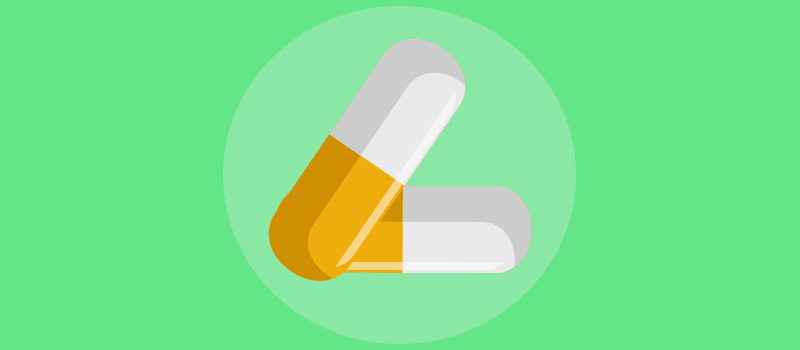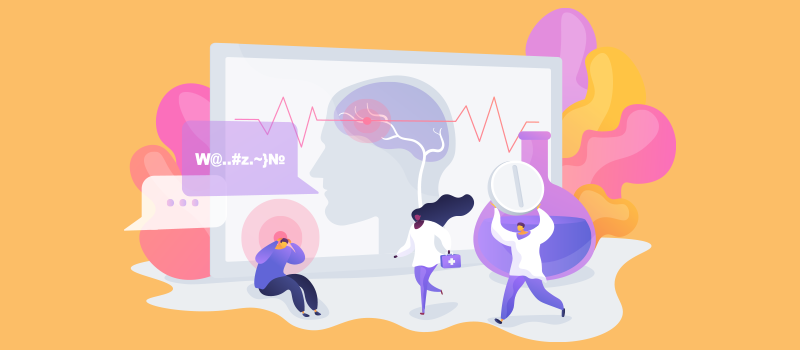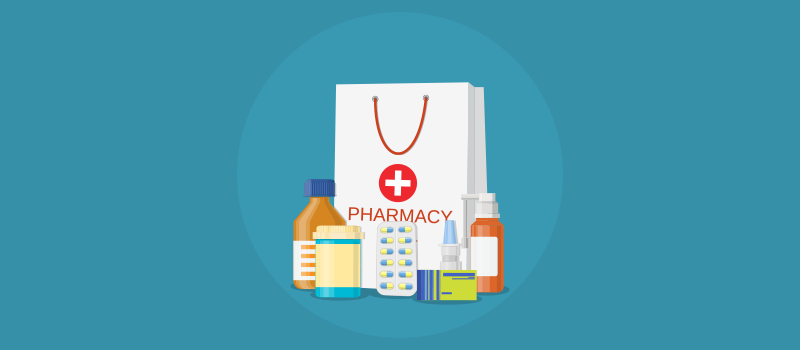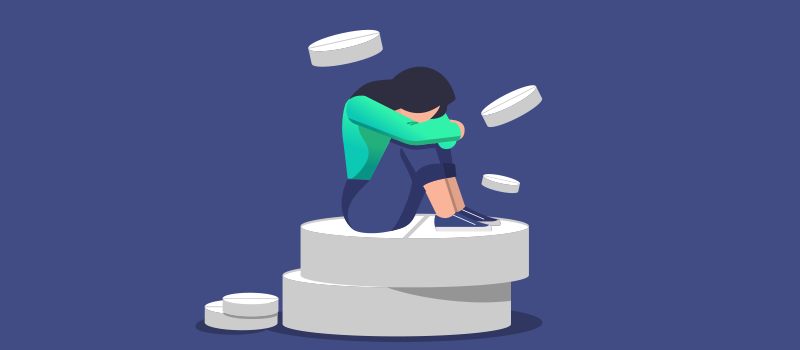Gabapentin Uses & Side Effects

Gabapentin belongs to a group of medications called anticonvulsants. Please continue reading to learn more about this medicine, including its uses and side effects.
In what dosage forms is gabapentin available?
Gabapentin (brand name drug Neurontin) is available in different forms, including:
- 100 mg, 300 mg, and 400 mg gabapentin capsules
- 600 mg and 800 mg gabapentin tablets
- 250 mg/5 mL gabapentin oral solution
You should take gabapentin exactly as prescribed by your healthcare professional. It is important to keep in mind that gabapentin is available under different brand names, which are not interchangeable; these brand names are approved to treat different health conditions. In case of a missed dose, take the medicine as soon as you remember. However, if it is almost time for your next dose, skip the missed dose and take the next dose according to your regular dosing schedule.
What can gabapentin be used for?
The brand name Neurontin and Gralise are approved to treat postherpetic neuralgia and partial seizures, and the branded drug Horizant is approved for the treatment of restless leg syndrome.
Treat seizures
Gabapentin is used, along with other medications, to control seizures, specifically partial-onset seizures. This medication is approved for use in adults and children over the age of 3 years. It works by decreasing abnormal nerve signals in the brain.
The usual starting dose of gabapentin in adults is 300 mg by mouth on day one, 300 mg by mouth twice daily on day two, then 300 mg by mouth three times a day on day 3, and thereafter. The dose can be increased up to 600 mg three times a day. The gabapentin dose in children under 12 years of age depends on the child’s body weight and will be determined by a healthcare provider.
Treat nerve pain caused by postherpetic neuralgia
People who have shingles can develop lasting skin pain in the affected areas. This is called postherpetic neuralgia. Taking gabapentin can help relieve nerve pain in adults. The exact mechanism of gabapentin is unknown, but it is believed that gabapentin changes the way the body feels and reacts to pain.
The gabapentin dosage for postherpetic neuralgia is 300 mg once a day on day 1, 300 mg twice a day on day 2, and 300 mg twice a day on day 3. The dose can be increased up to 1800 mg per day in divided doses (600 mg three times daily) as needed.
Treat restless legs syndrome
Restless legs syndrome is a condition in which there is leg discomfort and a strong urge to move the legs when lying down at night. Gabapentin enacarbil extended-release tablets (brand name Horizant) are used to treat moderate to severe restless legs syndrome. It is unclear how the medicine relieves this condition. Gabapentin is taken as a single 600 mg dose at around 5 PM for restless legs syndrome. Your doctor may adjust the dose if needed.
Is gabapentin a strong painkiller?
Gabapentin is not a conventional painkiller. It is an anticonvulsant medication that is very effective in relieving nerve pain. There may be better medical treatments for other types of pain. For example, nonsteroidal anti-inflammatory drugs like ibuprofen or naproxen may be a better option for inflammatory muscle pain. Talk to your doctor about what medication might be best for your pain symptoms.
What are the most common side effects of gabapentin?
The most common side effects of gabapentin are drowsiness, dizziness, and fatigue. Other side effects include headache, blurred vision, double vision, uncontrolled shaking, eye movements, problems with balance or muscle movement (unsteadiness), anxiety, memory problems, strange or unusual thoughts, dry mouth, heartburn, upper stomach pain, nausea, vomiting, diarrhea, constipation, increased appetite, weight gain, swelling in the limbs, back pain, joint pain, fever, swollen glands, sore throat, flu-like symptoms, ear pain, and red, itchy eyes.
Note that not everyone develops side effects from gabapentin. Some people tolerate the medicine well. Others may develop side effects that improve as the body adjusts to the medicine. Call your doctor for advice about side effects if they are severe or do not get better after a few days.
More serious side effects of gabapentin include skin rash, itching, swelling of the face, eyes, lips, tongue or throat, bluish tinge to the lips or fingernails, hoarseness, trouble breathing or swallowing, trouble speaking, unexpected muscle pain, extreme sleepiness, confusion, and seizures. Seek medical treatment without delay if you develop these signs and symptoms.
What are the dangers of taking gabapentin?
SEVERE ALLERGIC REACTION
Rarely, taking gabapentin can lead to a serious drug reaction which can cause facial swelling or anaphylaxis (throat closing). These allergic reactions can lead to life-threatening breathing problems. Gabapentin can also cause serious skin reactions called “drug reaction with eosinophilia and systemic symptoms” (DRESS). The signs and symptoms may include rash, redness, peeling, and blistering of the skin. Stop gabapentin and seek emergency medical attention if this happens.
WEAK OR SHALLOW BREATHING
Gabapentin can cause respiratory depression (dangerously slow breathing). The risk is greater with drinking alcohol or taking other drugs like opioids and benzodiazepines that can also slow down breathing. Also, people with breathing problems like asthma, chronic obstructive pulmonary disease (COPD), head injuries, and high pressure in the brain are at risk. Get emergency medical help if you develop trouble breathing or a bluish tinge to the lips, fingers, or skin.
DRUG INTERACTIONS
Taking gabapentin with certain other medications can lead to potentially dangerous interactions. Give your doctor and pharmacist a complete list of your current medications, including prescription drugs, over-the-counter medicines, dietary supplements, and herbal products, to lower your risk of drug interactions. Specifically, tell your healthcare providers if you are taking antidepressants, anti-anxiety medications, antihistamines, opioid pain relievers, sedatives, tranquilizers, or sleeping pills.
OVERDOSE
In case of an overdose of gabapentin, call your local poison control center or the national poison control center at 1-800-222-1222. Call 911 if a person has slowed or stopped breathing, has collapsed, or had a seizure.
SEVERE SLEEPINESS AND DIZZINESS
Gabapentin can cause extreme drowsiness and dizziness and lower your ability to concentrate, focus, and react. The risk of this happening is greater if you're on high doses of gabapentin, drink alcohol, or take other medications that can cause sleepiness (for example, anti-anxiety medications, sleeping pills, and muscle relaxants). Do not drive or do anything that requires your full focus until you know how gabapentin affects you. Talk to your doctor if you feel very sleepy or have trouble concentrating after starting gabapentin.
WITHDRAWAL SYMPTOMS
Suddenly stopping gabapentin can cause withdrawal symptoms such as nervousness, anxiety, irregular heart rhythm, and seizures. Do not stop taking this medicine or change your dose without talking to your healthcare provider first. They will tell you how to slowly lower your dose.
SUICIDAL IDEATION
Taking gabapentin can cause suicidal thoughts and behaviors. This can happen within a week of starting the medicine. Tell your doctor immediately if you notice any new or worsening symptoms of depression, anxiety, panic attacks, trouble sleeping, irritation, anger, aggression, or restlessness. You should educate your family, friends, and caretaker about this side effect at the beginning of treatment so they can be more vigilant.
SERIOUS SIDE EFFECTS IN CHILDREN TAKING GABAPENTIN
Gabapentin is approved for use in children between 3 and 12 years old. Children taking gabapentin can develop mental health changes, including aggression, unstable emotions, trouble concentrating, hyperactivity, restlessness, and a fall in school performance. Tell your child’s doctor if you notice any behavior changes in your child while on gabapentin.
References:











SOCIAL